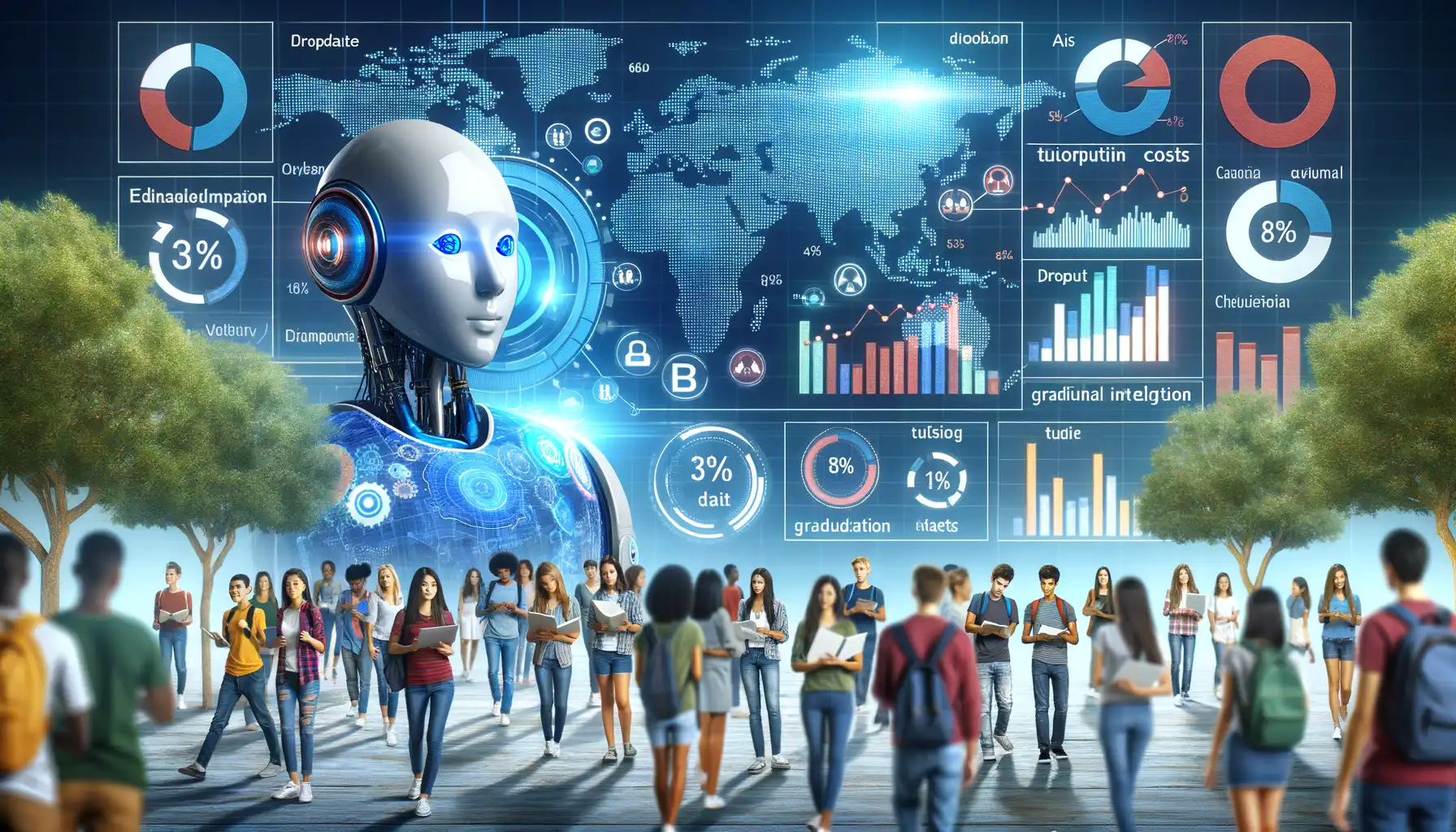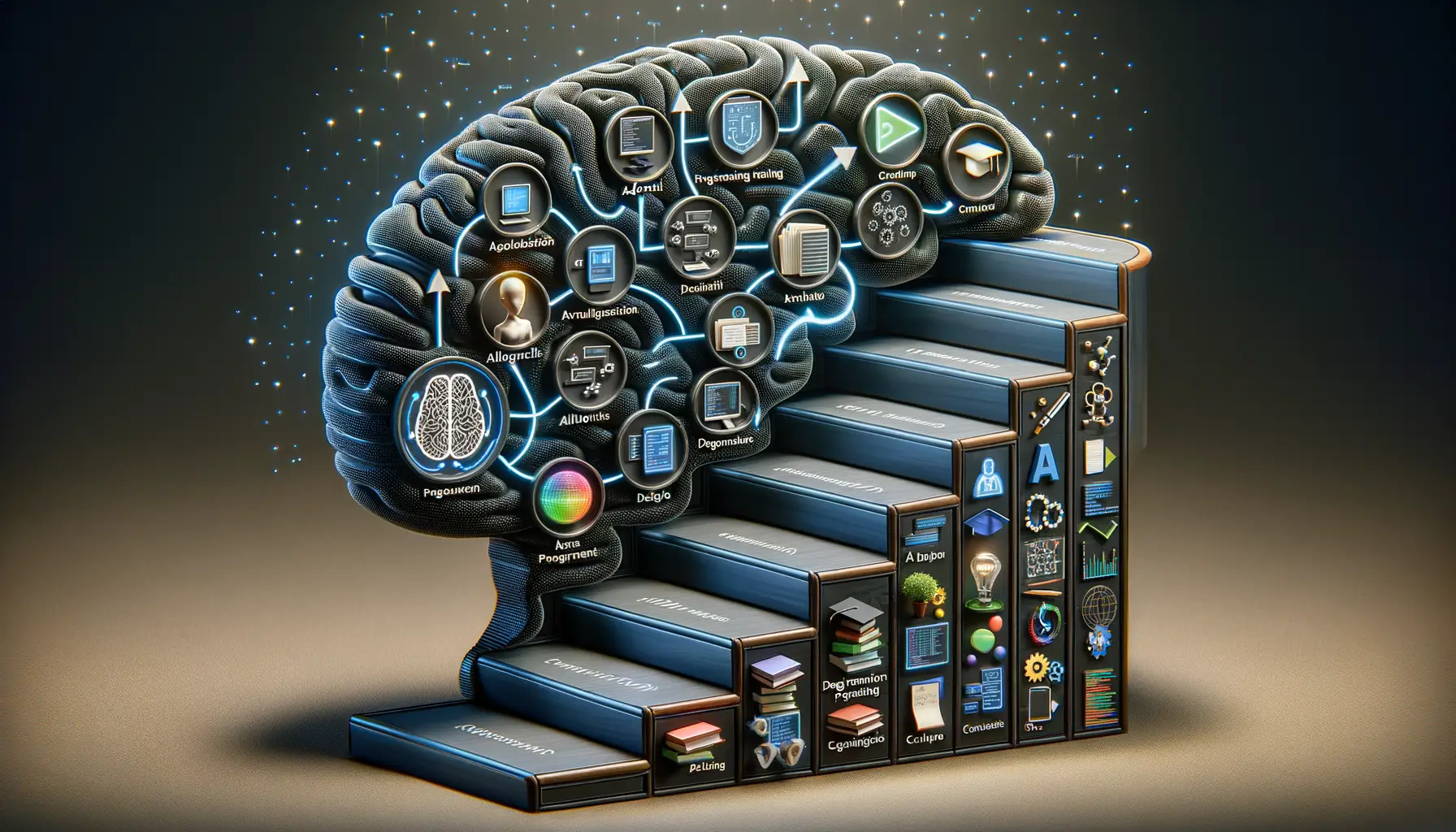Using AI to Forecast Demand for Specific Degree Programs
Catch a CheaterIntroduction to AI in Demand Forecasting for Education
The future of higher education is no longer written in stone—it’s being coded into algorithms. Imagine harnessing the power of artificial intelligence to peer into the crystal ball of student demand for degree programs. With the rise of AI in demand forecasting, educators can move beyond guesswork and into a realm of data-driven precision.
Empowering Education with Smarter Decisions
Traditional methods of predicting which degree programs will thrive often feel like throwing darts in the dark. Enter AI-powered demand forecasting, where machine learning and advanced analytics team up to provide educators with actionable insights. For instance, instead of relying on outdated enrollment trends, AI can analyze factors like labor market shifts, search engine data, and demographic patterns to predict what students will need tomorrow—not just today.
Picture this: an institution spots a rising interest in sustainable technology or healthcare management before it even hits mainstream demand. That’s the kind of foresight AI offers. By tapping into mountains of data, it transforms uncertainty into opportunity.
- Flexible Program Creation: Adjust course offerings dynamically based on real-time insights.
- Student-Centered Focus: Meet learners’ evolving needs before they even voice them.
- Resource Optimization: Direct budgets, faculty, and facilities toward high-demand areas.
Seeing Patterns Where Humans Can’t
Think about how Netflix predicts the next show you’ll binge. AI in forecasting works similarly—except instead of recommending TV shows, it spots emerging educational trends. For example, it might notice spikes in searches for “data science certification” or an increase in job postings mentioning “cybersecurity expertise.” These hidden signals are gold mines for colleges wanting to stay ahead of the curve.
Ultimately, AI isn’t just a tool; it’s a compass guiding institutions toward relevance and innovation. Ready to see the future? Let’s dive deeper!
How AI Analyzes Trends in Higher Education

Mapping the Pulse of Academia with AI
Picture this: higher education is a vast ocean, with shifting tides of student interest, job market demands, and societal trends. How do we navigate it? Enter AI-driven trend analysis, a tool that doesn’t just dip its toes into data but dives deep.
AI sifts through mountains of information—everything from enrollment statistics to global industry shifts—and draws meaningful connections faster than any team of humans ever could. Think of it as a hyper-intelligent detective, spotting patterns where others see chaos. It doesn’t stop at numbers either; AI analyzes keywords from social chatter, job boards, and even online course reviews to uncover where students’ passions and career aspirations are heading.
- Natural Language Processing (NLP): AI reads and deciphers thousands of research papers, blogs, and reports to identify emerging topics like “AI ethics” or “renewable energy solutions.”
- Predictive Analytics: By crunching historical data, AI forecasts how interest in fields such as healthcare or green technology will rise or wane years down the line.
The result? Universities gain a crystal ball—not for magic, but for insight. No guesswork, just cold, hard accuracy wrapped in a warm layer of practicality.
Benefits of Using AI for Predicting Degree Program Demand

Transforming Guesswork into Precision with AI
Imagine trying to predict the next big trend in degree programs by sifting through stacks of spreadsheets. Overwhelming, right? Enter AI-driven forecasting, your crystal ball for academic planning. With AI, educational institutions can step away from gut feelings and embrace data-backed decisions that feel like a superpower.
AI doesn’t just crunch numbers—it unlocks patterns hidden in years of enrollment data, job market fluctuations, and even societal shifts. For instance, if there’s a sudden rise in demand for skills in renewable energy or cybersecurity, AI picks up on these signals before they hit mainstream news. This means institutions can adjust program offerings faster than ever, keeping them ahead of the curve.
- Better resource allocation: No more overfilled classes in one degree while others run mostly empty.
- Boosted student satisfaction: When demand is accurately forecasted, students are more likely to find the programs they want, when they want them.
- Increased enrollment: Aligning programs with market trends equals happier students and higher applications.
Adapting to Ever-Changing Landscapes
The beauty of AI lies in its agility. It updates forecasts in real time, responding to unexpected shifts like a surge in interest in tech fields after a major innovation. Think of it as having an expert navigator who constantly recalculates your route to success. Why settle for guesswork when you can have precision at your fingertips?
Challenges and Limitations of AI in Demand Forecasting

The Human Touch: Where AI Can Stumble
With all its brilliance, even the most advanced AI systems face hurdles. Picture this: an AI analyzing demand for a niche degree in marine archaeology. It might miss the cultural zeitgeist—a viral documentary or a trending social issue—that suddenly sparks interest in oceans and history. Why? Because AI relies on historical data and patterns, not emotions or gut instincts.
And then there’s the issue of data quality. Garbage in, garbage out. If the input data is messy or incomplete—say, missing enrollment numbers from smaller colleges—AI predictions can end up as skewed as a carnival mirror reflection.
AI also struggles with unpredictable human behavior. For instance, how do you forecast a surge in psychology degrees after a global pandemic changes people’s priorities? AI might scratch its metaphorical head at this curveball.
- Bias baked into historical data can perpetuate inequalities.
- A sudden policy change, like free tuition offers, throws off projections.
- NUANCE—AI lacks it. Passion-driven decisions, like choosing art over engineering, are harder to quantify.
While AI is powerful, some challenges remind us why humans remain an essential part of the equation. Sometimes, intuition trumps algorithms.
Steps to Implement AI for Academic Program Planning

Breaking Down AI Implementation into Manageable Steps
Imagine AI as your co-pilot, ready to navigate the sometimes tricky skies of academic program planning. But before you take off, preparation is key. Here’s how you can set the stage:
- Define your goals clearly. Are you forecasting enrollment for STEM programs? Or exploring interest in niche degrees like Environmental Psychology? Narrowing this focus is crucial—AI thrives on specifics.
- Audit your data. Dive into your historical enrollment records, online course performance, and even external labor market trends. Think of it as gathering every puzzle piece before trying to complete the picture.
- Choose the right tools. AI platforms vary. Some excel at predictive analytics, while others specialize in student preference mapping. Match the tool to your needs, like a carpenter picking between a hammer and a drill.
Collaboration Paves the Way
Deploying AI is not a solo act. Engaging with faculty, admissions teams, and IT specialists transforms this from a tech experiment into a holistic strategy. For instance, professors might provide insights into emerging disciplines, while IT experts ensure flawless integration. Together, you’re designing an orchestra where AI hits all the right notes.
Testing your chosen AI system is also non-negotiable. Run pilot scenarios—forecast demand for a popular program, then compare the results to real-world trends. This hands-on approach not only builds confidence but sharpens accuracy, ensuring your AI implementation soars smoothly.
